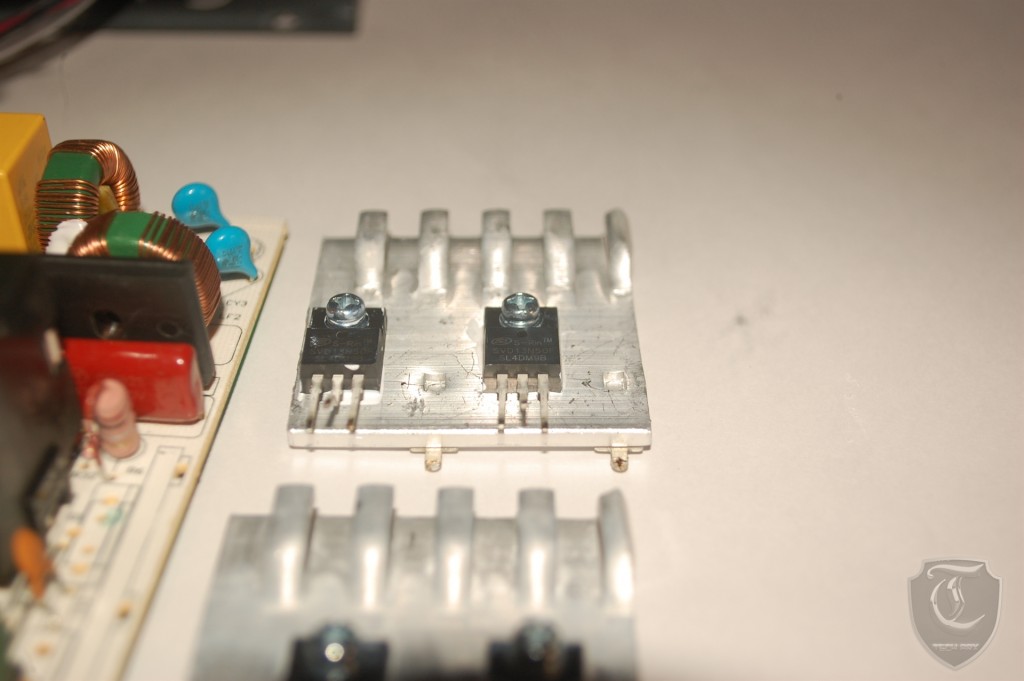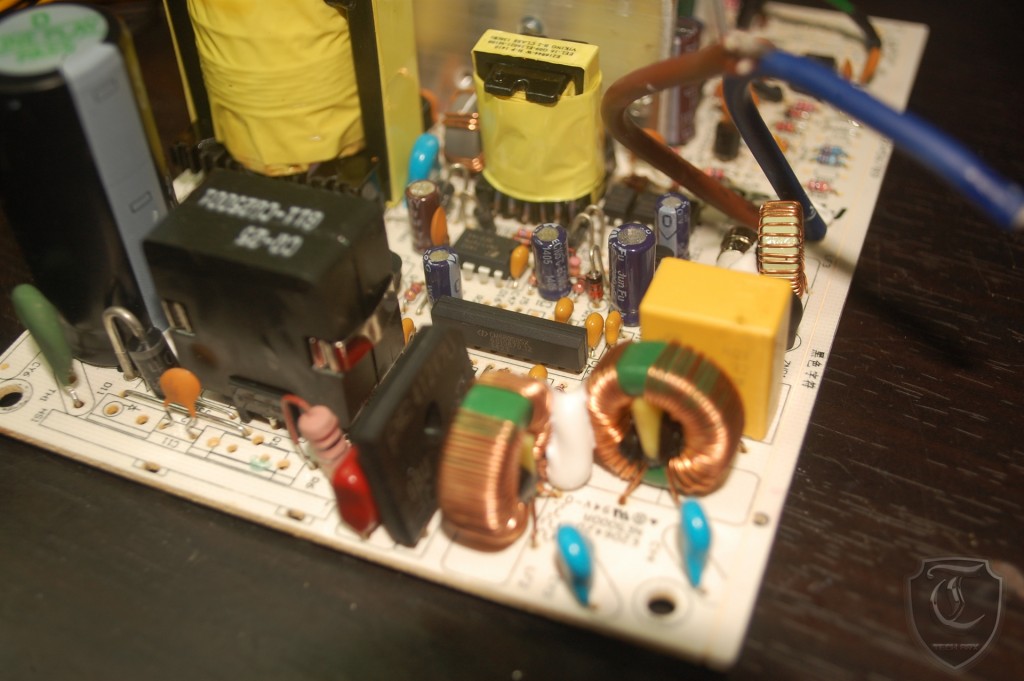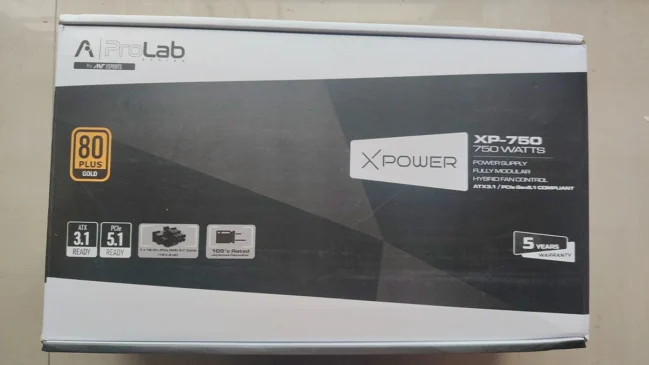
Today we will be conducting an internal analysis of the Antec VP500P.
Before we begin, a quick look at the topology of a DC-DC switching power supply, of which this is also a member.
Before we begin, a quick look at the topology of a DC-DC switching power supply, of which this is also a member.

Not all power supplies have all the modules as shown in the diagram, and not all have correct/complete implementations.
As you can see, the following blocks have a following functions.
1. Filter: This section has two roles, one is to prevent interference in the mains line form entering the PSU and more importantly, to prevent switching noises generated within it from reaching the wall plug and other connected equipment. Usually this section will have a combination of X and Y caps, and common-mode inductors.
2. Rectifier: This is a simple block that converts AC to DC. This is usually either a set of Schottky rectifiers or simple silicon diode bridge. Low-cost supplies usually use the latter, which are less efficient, slower switching, and have a higher voltage drop.
3. PFC (optional): PFC is mandatory in all products for sale within the EU. As a result it is found more or less in every PSU sold today. It is used for power shaping between the rectifier and the primary side capacitor, in order that the power factor of 0.9 be attained by such supplies. Presence of PFC does not imply higher quality PSU, nor does active PFC benefit the end user, unless as in EU where consumers get penalised for maintaining lower PFC than is mandated by the supply companies.
4. Storage: This is one of the key components of the supply, and is either one or two capacitors on the primary side. Primary side caps essentially are the backbone of the supply, and the the first component to suffer age-related failure. It carries the entire load current of the power supply. A lot of low-cost supplies use cheaper Chinese capacitors, which do not hold up as well, last as long or perform to the standard of the more expensive Japanese/European caps. This is also one of the highest cost items in the BOM for a power supply, hence tends to get compromised with when the supply is put into production.
5. Primary switching: This is under the direct control of the main PWM chip, and energises the primary of the transformer at a switching frequency between 60 and 120KHz. The various types are soft switching, hard switching and resonant LLC switching. All PCPSUs normally stick with the hard switching format for simplicity and efficiency. Hard switching generates the most EMI of all types, but is also the most efficient.
6. Secondary switching: This is the section that converts the switched waveforms in the transformer to DC. Older supplies used diodes, nowadays most everyone uses MOSFETs on the secondary side as well with sync conversion.
7. Smoothing: this is the post-rectifier filtration section, and uses capacitors and coils to create a smoothed DC voltage. Again quality of capacitors and the supply layout dictate key dimensions of performance such as output noise. The voltage here is usually sampled and sent back to the PWM controller in some form for correct regulation.
8. Output: This is the cabling that goes from the PSU to the connectors. Cheap connectors or cheap wire will create voltage drop and the regulation will suffer. 18AWG is the accepted minimum for all lines upto 10A each.
The Antec VP500 uses standard forward switching topology with individual voltage regulators for the three rails. Unlike more expensive DC-DC designs, this uses a separate output transformer/secondary for each rail and this results in lower efficiency as well as increased output noise.
The PSU is based on a CWT platform and uses a standard layout for this manufacturer, and many components are also manufactured by CWT itself – such as some diodes and the main controller. Let’s take a closer look at the guts:
1. Filter: The section consists of four Y-caps, two X-caps and two common-mode chokes. No reason to complain about this section, it seems well-thought out. The caps look a little smaller than I would use, but that’s nitpicking. There is also a thermistor for soft-starting the supply, which is nice at this price point.
2. Rectifier: This uses a standard Glass rectifier (no Schottky) that drops ~1V at full load. The part number is GBU8J, by Vishay. It is capable of peak forward current of 8A when used with heatsink and 4 without, Our PSU came with no heatsink, so expect this bit to run hot at full load.
3. PFC (optional): The PFC section comprises of one CMPFD86 Diode by Champion and one SVD13N50 MOSFET. The diode can carry 8A of current, the MOSFET 13A and the heatsink seems capable enough to support both of them at high load. However, the PFC is a half-wave design and you can expect this to affect efficiency. The PFC and main switching controller is a Champion CM6805 SIL chip.

4. Storage: The primary side storage is shouldered by one Capxon 270uF cap, and this is the primary disappointment. I would have liked to see a slightly larger cap, or one from Japan or the EU region (Hitachi or BC), but I guess there’s an accountant at play here.

5. Primary switching: The primary side switching is handled by the Champion controller, and uses two of the same SVD13N50F MOSFETs to drive the transformer primary.

6. Secondary switching: Unfortunately the PSU was extremely well-put together and attempting to dismantle it at this section was bound to end in tears. In the interest of being able to publish subsequent reviews, we decided to pass it on. However, we did see one Fairchild TO-247 MOSFET that was responsible for one of the rails and a couple other semiconductors we could not reliably identify, that are used for the rest.
7. Smoothing: The smoothing uses a bunch of very poor quality Chinese capacitors. This is extremely disappointing however at this price point I don’t think we can expect much better. On the bright side, there are at least coils in series so some relief may be expected. I wouldn’t hold out hope.

8. Output: The output cabling is quite thin. It still says 18AWG, so we’ll go with that and label it satisfactory.
The Antec Vp500PC is aimed at budget users who looks to find acceptable performance at a low price and as such the PSU delivers, it ran our quickly set up system of 4790K+r9 270X without a hiccup for the period we tested it before disassembling and we have no problem suggesting this for any no frills budget builds.
Quite a good psu for its price.
On the basis of the quality of its internal components it gets a silver rating.









